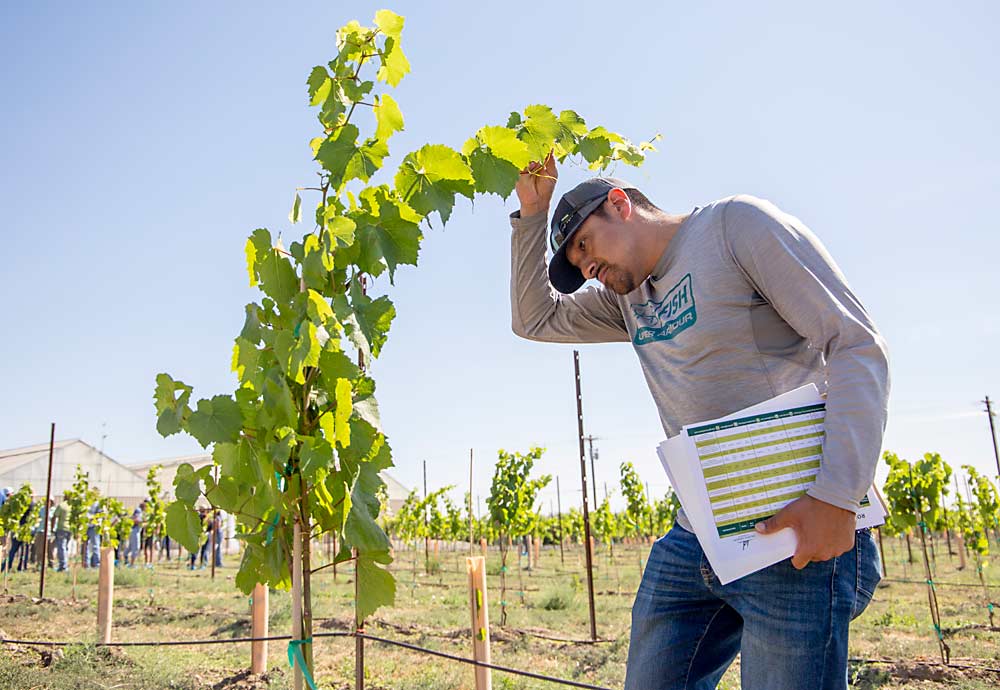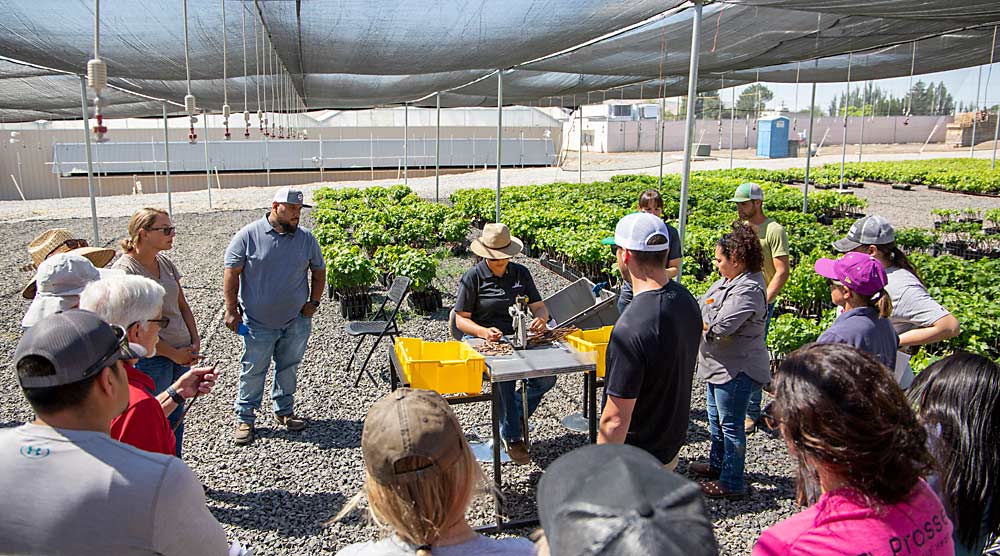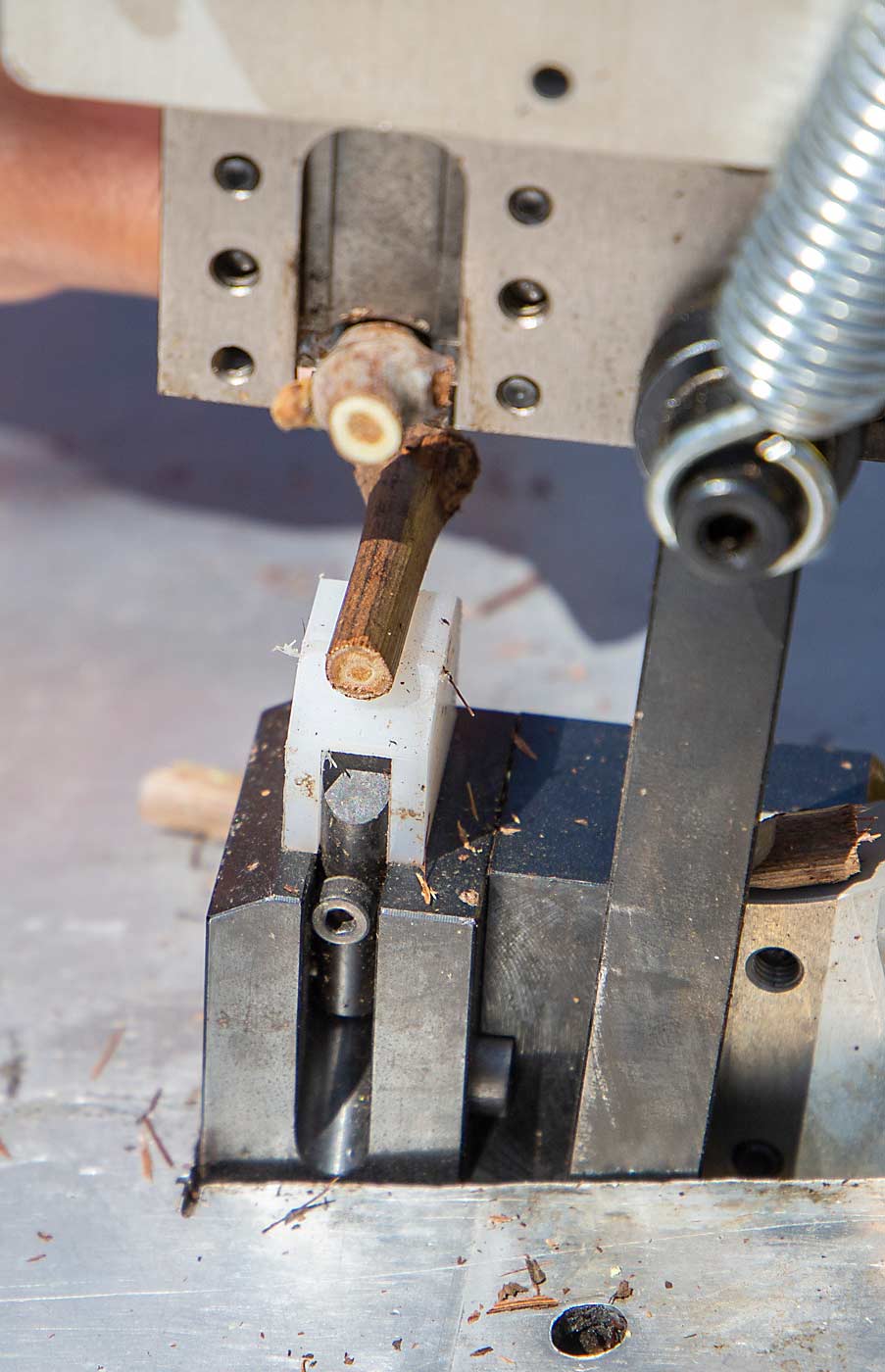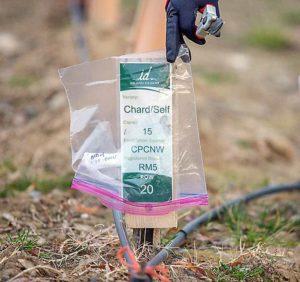
They don’t have a lot of information yet.
But Kevin Judkins of Inland Desert Nursery and Michelle Moyer of Washington State University learned at least one valuable lesson during the first year of a rootstock trial: Grafted grapevines planted green can survive some harsh weather extremes.
Inland Desert planted the 1.2-acre trial in 2021, with many of the nursery’s green, potted vines not making it into the ground until the infamous late-June heat dome that brought record-setting high temperatures to the Northwest. Then came the late spring snow and cold weather earlier this year.
Through all of that, 98 percent of the vines in the experimental block survived and are growing strong into Year 2.
“They all performed similarly successfully,” Judkins said. “We know we can get through the first year with a good stand.”
Moyer speculated that says more about Inland Desert’s viticulture skills than the characteristics of the rootstocks.

The three-year trial, funded by a $25,000 Western Sustainable Agriculture Research and Education grant, aims to inform Washington’s transition from own-rooted vines to rootstocks to keep phylloxera and other diseases and pests at bay. The investigators also will evaluate cold hardiness and nutrient uptake data of the five rootstocks under comparison.
The rootstocks are: 1103 Paulsen, 101-14 Millardet et de Grasset, 3309 Couderc, Schwarzmann and SO4/Oppenheim No. 4 — all grafted to the same Chardonnay 15 clone scion. A self-rooted lot acts as a control.
Judkins and Moyer hosted a field day in July where roughly two dozen people stretched blue plastic booties over their shoes — to prevent phylloxera spread — and strolled through the rows to check out the vines for themselves, something Inland Desert encourages on an ongoing basis. Several representatives from Ste. Michelle Wine Estates attended, as did a few smaller independent wineries and vineyard owners.
The research is overdue, said Mike Jacobsen, who owns Above the Curve Vineyard near Prosser, which specializes in Semillon grapes. He plans to replant vines from an old block with rootstocks, something he believes is crucial now that the root-feeding phylloxera has reached the state.
“That’s the only way to go,” he said as he inspected vines.

Likewise, Les Collines Vineyard of Walla Walla has begun switching to grafted vines, including some head trained, and has committed to making all new commercial plantings grafted.
“We’re going all-in,” said viticulturist Brooke Robertson.
The industry at large is not waiting for all of Judkins’ data. Wineries throughout the state are already making the switch to grape rootstocks. The 1103 Paulsen is one of the favorite choices, so far, Judkins said.
The industry isn’t waiting for game-changing, surprise results from the trial, Moyer said, because no one expects that. Instead, the trial promises a bit-by-bit growing profile of data about rootstock nuances over time. All those new plantings do the same, making the entire state a trial of sorts, she said. In fact, at the field day, she shared tips about how growers could hold their own small trials.
Even if growers stick with own-rooted vines for new plantings — and many still do — rootstocks have become a routine part of the decision matrix, alongside site selection and variety, in the few years since phylloxera was discovered, Moyer said.
“Those conversations are way more frequent than they were before,” she said.
—by Ross Courtney







Leave A Comment